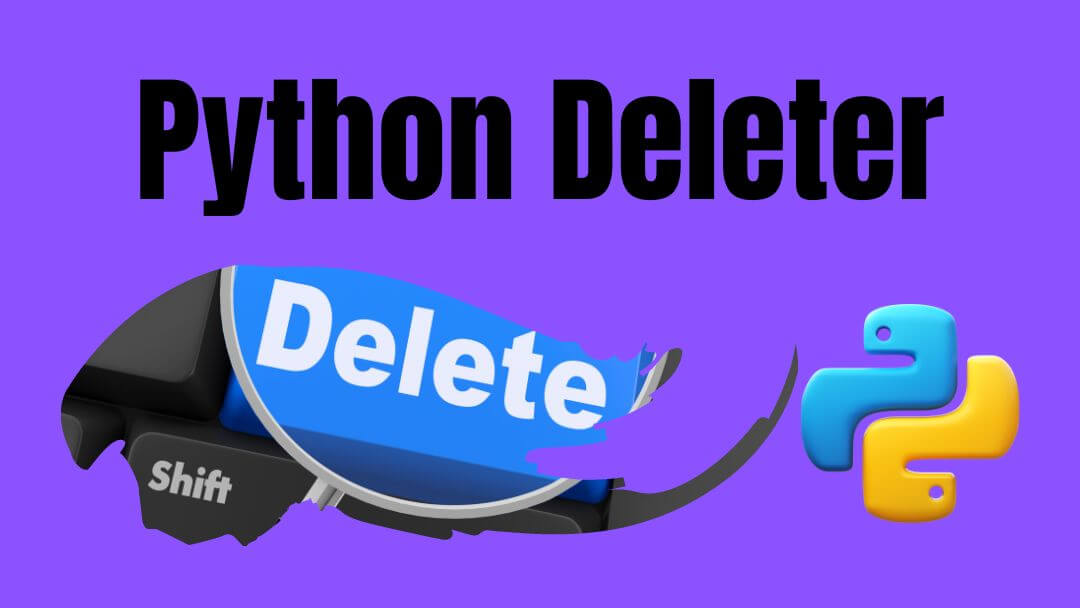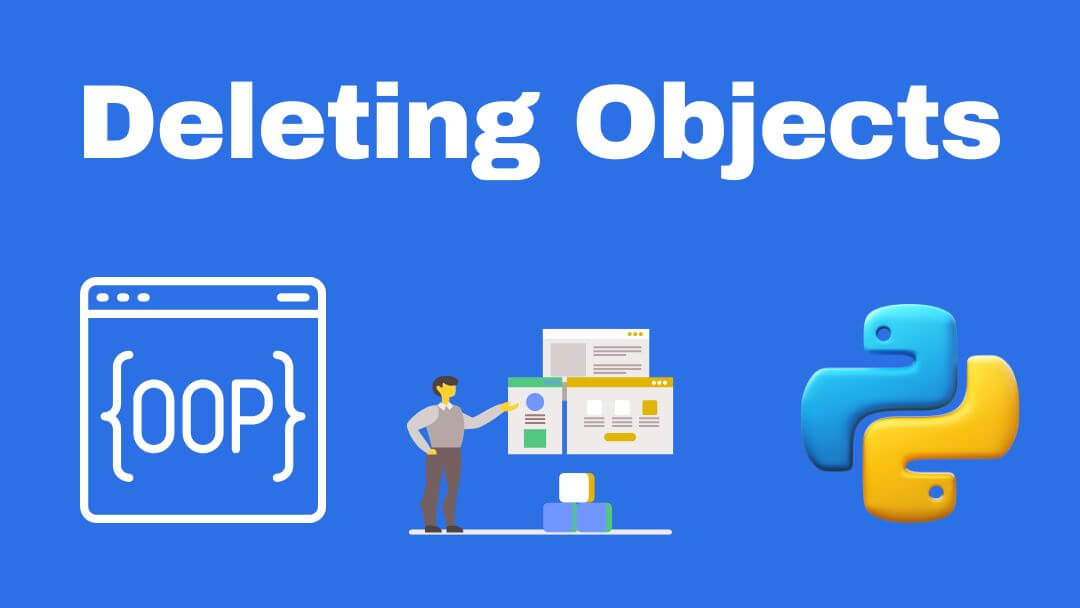Introduction
Python offers numerous tools and techniques for effectively handling data deletion tasks in this comprehensive guide on its usage.
In particular, we explore various deletion strategies, methods of implementation, best practices, and scenarios where they shine.
Whether you are a seasoned Pythonista or just starting your coding journey, you are about to discover the essential skills for effective data deletion in Python.

Understanding the Python Deleter Landscape
Before we dive into the specifics of Python data deletion, let’s gain a clear understanding of what it entails and why it is essential.
What is Python Deleter?
Python deleter refers to the process of removing elements or data structures from memory, thereby freeing up resources and optimizing program performance.
This operation is indispensable for managing memory efficiently and ensuring your Python applications run smoothly.
Why Python Deleter Matters
Efficient data management is at the heart of every well-structured Python program.
Here are some compelling reasons why mastering Python deletion is crucial:
- Memory Optimization: Python deleter helps prevent memory leaks by releasing memory occupied by objects that are no longer needed, preventing your application from becoming sluggish over time.
- Resource Efficiency: It ensures efficient utilization of system resources, making your application more resource-friendly, which is particularly important for server applications and long-running processes.
- Data Security: Proper deletion is crucial in upholding data security and privacy, as it ensures sensitive information is deleted when no longer needed from memory.
- Improved Code Maintenance: Clean and efficient code is easier to manage and debug, lowering the chance of errors while making collaboration between developers more straightforward.
Now that we have established the importance of Python deleter let’s explore various techniques and scenarios where they can be applied effectively.
Built-in Python Deleter Methods
Python offers several built-in functions and methods to assist with data deletion. Let’s examine some of the most frequently utilized ones here.
Deleting Variables
One of the easiest and simplest methods of data deletion in Python is using del to delete variables from memory and free up space for other purposes. Here is an example:
The code
my_variable = “I will be deleted”
del my_variable
Removing Items from Lists
Lists are an essential data structure in Python, and you often need to remove items from them. Python offers several methods for this purpose, including remove(), pop(), and slicing.
Using remove()
The remove() method removes the first occurrence of a specified value in a list. Here is an example:
The code
my_list = [1, 2, 3, 4, 5]
my_list.remove(3) # Removes the first occurrence of 3
Using pop()
The pop() method removes an item at a specified index and returns it. This can be useful when you need to both delete an item and access its value:
The code
my_list = [1, 2, 3, 4, 5]
popped_item = my_list.pop(2) # Removes the item at index 2 (value 3) and assigns it to popped_item
Slicing
Slicing allows you to remove a range of elements from a list by specifying the start and end indices:
The code
my_list = [1, 2, 3, 4, 5]
my_list[1:4] = [] # Removes elements from index 1 to 3
Deleting Dictionary Entries
Dictionaries are another essential data structure in Python. To delete an entry with a specific key, you can utilize the del statement or the pop() method:
Using del
The code
my_dict = {‘a’: 1, ‘b’: 2, ‘c’: 3}
del my_dict[‘b’] # Deletes the entry with key ‘b’
Using pop()
The code
my_dict = {‘a’: 1, ‘b’: 2, ‘c’: 3}
value = my_dict.pop(‘b’) # Removes the entry with key ‘b’ and returns its value
Advanced Python Deleter Techniques
While the built-in methods cover the most common scenarios, more complex data structures and situations may require advanced deletion techniques.
Let’s explore some of these advanced methods.
Deleting Files
In Python, you can operate the os module to delete files from your file system.
The os.remove() function is used for this purpose. Here is how you can delete a file:
The code
import os
file_path = ‘example.txt’
os.remove(file_path) # Deletes the file at the specified path
Deleting Directories
If you need to delete an entire directory and its contents, you can use the shutil module. The shutil.rmtree() function is your go-to choice:
The code
import shutil
directory_path = ‘my_directory’
shutil.rmtree(directory_path) # Deletes the directory and its contents
Deleting Objects with the del Statement

Python objects may feature a “__del__” method that is invoked whenever they are about to be destroyed, making cleanup simpler but sometimes unpredictable behavior if used inappropriately.
It should therefore be employed with caution.
Here is an example of how to define a __del__ method in a class:
The code
class MyObject:
def __init__(self, name):
self.name = name
def __del__(self):
print(f”{self.name} is being deleted”)
obj1 = MyObject(“Object 1”)
obj2 = MyObject(“Object 2”)
del obj1 # This will trigger the __del__ method for obj1
Using Context Managers for Safe Deletion
Python’s with a statement, when combined with context managers, provides a way of releasing resources properly after they no longer need them – especially important when working with files, network connections, or database connections.
Here is an example of using a context manager with a file:
The code
with open(‘example.txt’, ‘w’) as file:
file.write(‘Hello, world!’)
# The file is automatically locked when the block exits, ensuring proper cleanup
Conclusion
This comprehensive guide explores the world of Python deleter, providing insight into fundamental concepts, built-in methods, and advanced techniques.
Efficient data deletion is an indispensable skill for any Python developer as it not only optimizes memory usage but also ensures data security and code maintainability.
Remember that choosing the right deletion method depends on the specific requirements of your program.
Whether you are removing variables, elements from lists, or entries from dictionaries, Python offers versatile tools to meet your needs.
Additionally, advanced techniques like file and directory deletion, object cleanup, and context managers empower you to manage resources effectively and write robust Python code.
As your Python skills advance, mastering deletion will make you a more resource-savvy developer.
Apply these techniques in your projects to face data management challenges with precision and confidence.
